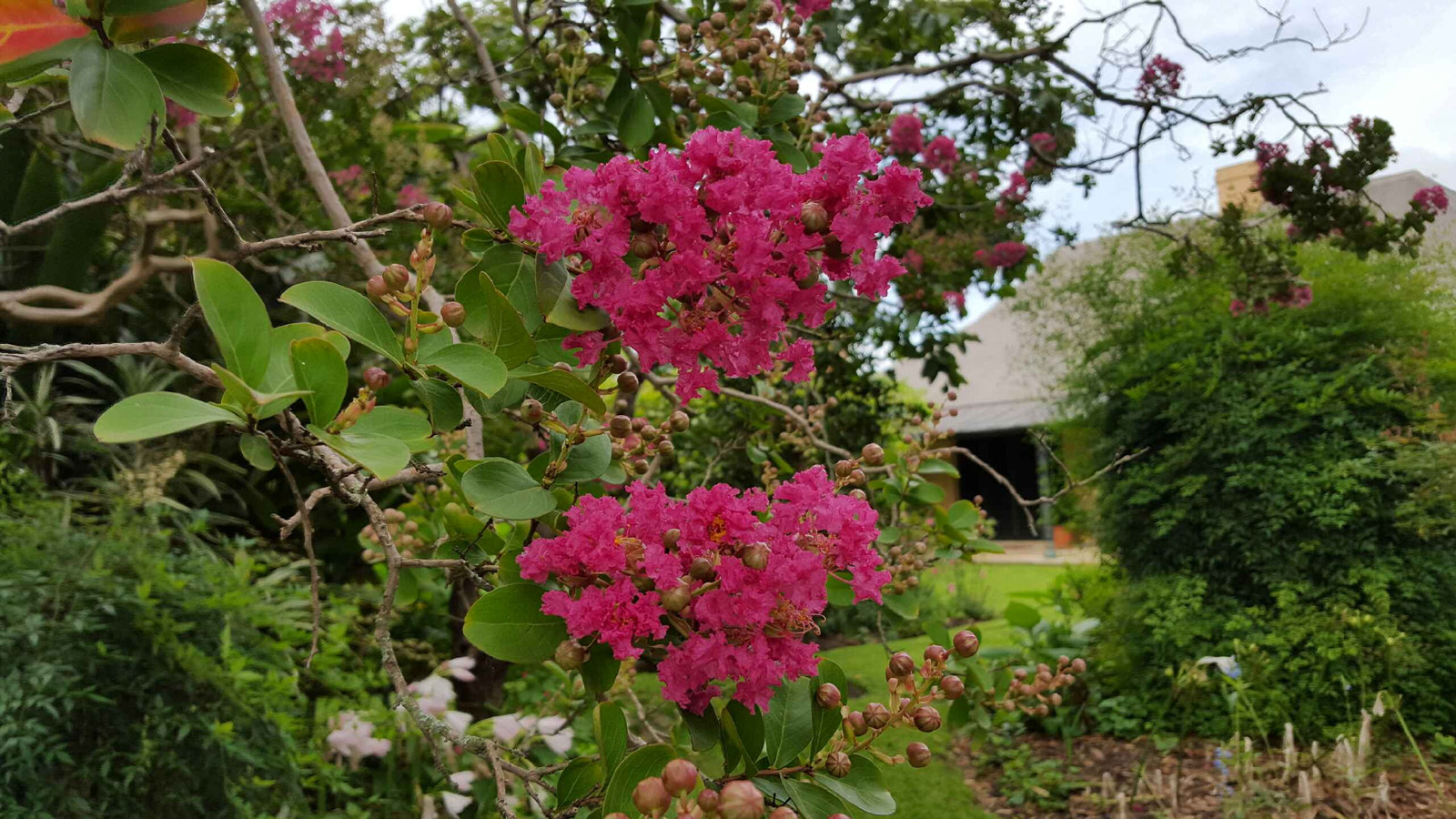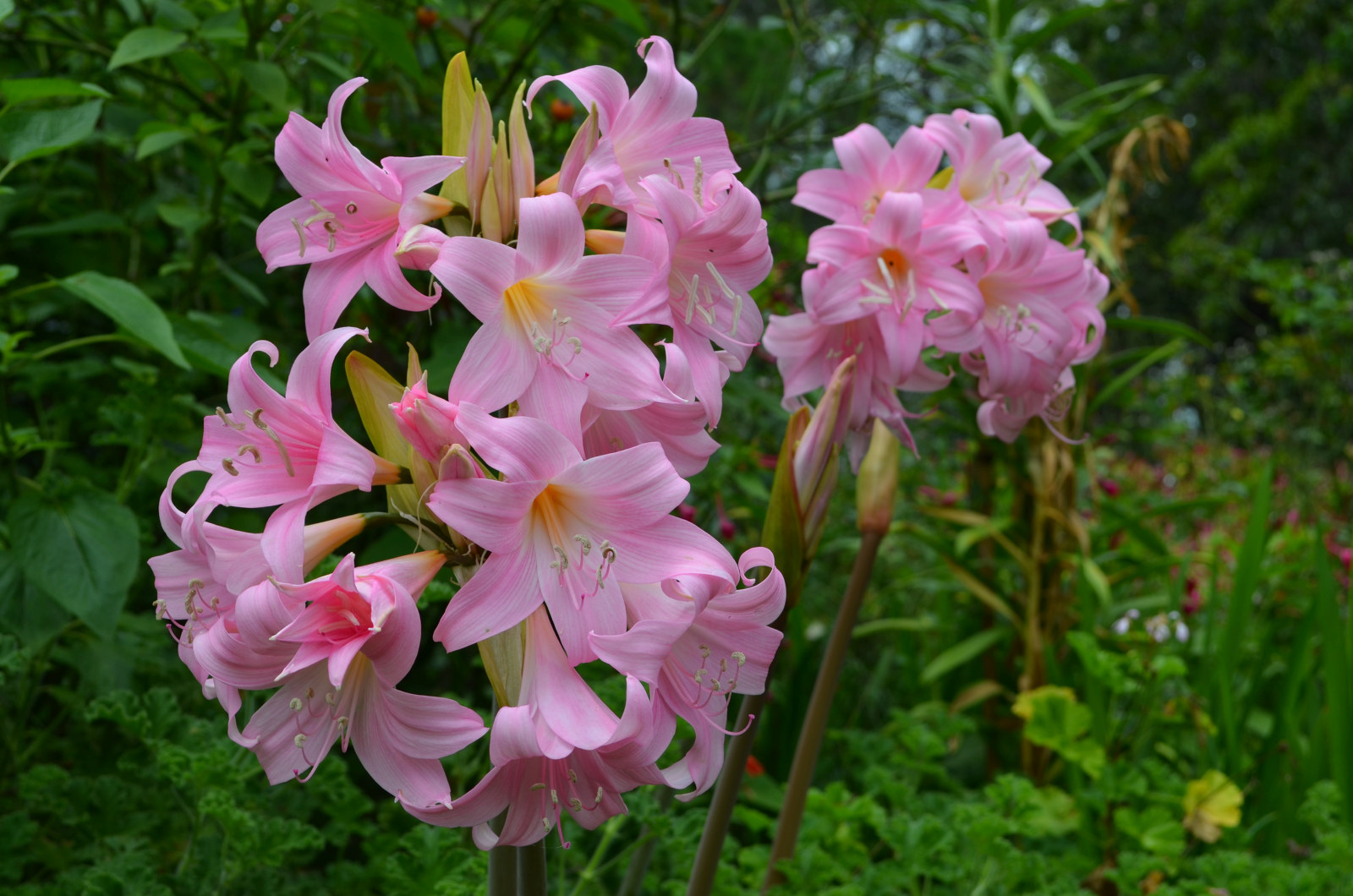Acanthus - an apt symbol for The Mint
Look at any classical building today, anywhere in the world and chances are you will find an acanthus leaf lurking somewhere: either on the capital of a Corinthian column, on friezes and borders of a Greek ruin, in countless William Morris designs, on the famous Warwick vase (which is a model for many sporting trophies notably the Australian Open), or indeed as a beautiful plant in many gardens. It’s everywhere!
Visitors to The Mint today are treated to a glorious massed display of Acanthus mollis in the front garden. These perennials, whose etymology derives from the Greek ak meaning a point and anth meaning flower5,have spikey glossy green leaves and showy upright flowers in spring. But look closer at the Mint building and you will find little acanthi rinceaux (floral ornamental motifs) hiding in the composition of the stained-glass panels of the entry doors. They adorn Queen Victoria’s crown and the words ‘Royal’ and ‘Mint’ which are emblazoned on its two leaves. Closer inspection will also reveal an acanthus ‘watermark’ on the glass of the upper panels decorated with golden floral garlands. They can also be spotted on the capitals of the archways leading up to the first floor of the Mint front building and on some of the ceiling roses (perhaps ‘ceiling acanthi’ would be a more appropriate term?).
The acanthus is a vegetal motif rich in symbolism and has long been associated with the notion of rebirth6. It is a symbol of immortality and resurrection,7 and as a decorative motif it has been used as early as 500 BCE in Grecian art8. Over the ages it has inspired countless artists, sculptors, architects and even poets. Milton’s epic poem, Paradise Lost (1667) mentions the acanthus “on either side” of the entrance to Adam’s bower9. But it is to Roman architectural historian Vitruvius that we owe the legend of the acanthus. Book IV of his 10-volume work, De Architecura (written c25 BCE) tells how sculptor Callimachus was inspired to create the Corinthian capital: A nursemaid of a recently deceased girl had placed a woven basket filled with her favourite things near her grave where acanthi grew. She placed a tile on top of the basket to prevent it blowing over, over time acanthus shoots started sprouting and eventually gracefully bent back through the sides, stopped by the tile. The sight of this elegant form inspired the passing Callimachus to ‘invent’ the now famous capital for the pillars at Corinth10.
The symbolism of rebirth is plain for us to read in Vitruvius’s account. Whether we chose to believe the veracity of this tale or not, it is still a good story. The acanthus is thus an apt symbol for the Mint complex too, which was saved from demolition in the early 20th century and ‘reborn’ many times, from its original iteration as a convict hospital into a working Mint, government offices and finally to our Museums of History NSW headquarters11. The next time you visit The Mint, take a closer look at the stained glass panels, the Corinthian capitals and ceiling roses, and feel the synergy between the real and the symbolic acanthi as they link us back in time and into the future in a wonderful continuum.
Footnotes
1. Gerson, Martha Blythe. "A Glossary of Robert Adam's Neo-Classical Ornament." Architectural History 24 (1981): 59-82. Accessed June 7, 2020. doi:10.2307/1568399. NOTE: The Mint building has a few Corinthian capitals in the archways in secondary entry, near the Sovereign Room. Also, on the ceiling roses.
2. Uhde, Constantine. "The Acanthus Scroll." The Workshop 4, no. 12 (1871): 177-78. Accessed June 7, 2020. doi:10.2307/25617728.
3. Valentine, K. B. "Motifs from Nature in the Design Work and Prose Romances of William Morris (1876-1896)." Victorian Poetry 13, no. 3/4 (1975): 83-89. Accessed June 10, 2020. Find out more.
4. Matthews, Joanna. "Four Nineteenth-Century Garden Ornaments in the Oxford Botanic Garden." Garden History 33, no. 2 (2005): 274-85. Accessed June 26, 2020. doi:10.2307/25434182.
5. Yates, James. "I. ON THE USE OF THE TERMS ACANTHUS, ACANTHION, &c., IN THE ANCIENT CLASSICS." The Classical Museum : A Journal of Philology, and of Ancient History and Literature 3, (01, 1846): 1-21.
6. Caneva, Giulia, Valentina Savo, and Alma Kumbaric. "Big Messages in Small Details: Nature in Roman Archaeology." Economic Botany 68, no. 1 (2014): 109-15. Accessed June 8, 2020. Find out more.
7. Archibald, J. David. "The Roots of the Tree of Life." In Aristotle's Ladder, Darwin's Tree: The Evolution of Visual Metaphors for Biological Order, 22-52. NEW YORK: Columbia University Press, 2014. Accessed June 7, 2020. doi:10.7312/arch16412.6. P 25
8. Op. Cit., Uhde, Constantine.
9. Lost, Paradise, ‘The Acanthus’ [1842] Lady's Book of Flowers and Poetry. Find out more.
10. W. P. A. "THE WORD ACANTHUS." The Massachusetts Teacher and Journal of Home and School Education 9, no. 11 (1856): 497-501. Accessed June 7, 2020. Find out more.
11. STARR, F, A Short History of the Mint, Museums of History NSW, viewed June 10, 2020.
Published on
Plant your history
Browse all
Plant your history
Beautiful bountiful bamboo
One of the most recognisable plants growing at Museums of History NSW today is bamboo. This colourful plant has a long history in colonial gardens

In the pink at Elizabeth Farm
Amid the late summer bounty in the garden at Elizabeth Farm, the crepe myrtle is the undoubted star of the show

Plant your history
Sumptuous cape bulbs light up late summer gardens
Belladonna Lilies and Crinum Lilies are tough bulbs that never say die and can survive years of neglect

Plant your history
Extending the olive branch
Just over a year ago we started a project to ensure the survival of the Elizabeth Farm European olive tree (Olea europaea), which is believed to be Australia’s oldest living cultivated olive tree
